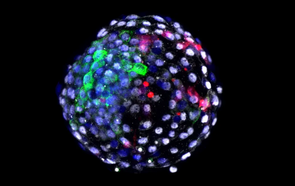
Profile
The positions in the table below reflect the Queen Mary University of London (QMUL)'s position overall, domestically, within their sector, and in various subject areas based on their Share. Each position links to the corresponding table where Queen Mary University of London (QMUL) is listed.
Position by research output Share
Position by research output Share in subject areas
Research
Overall research output
| Count | Share | |
|---|---|---|
| Overall | 406 | 62.11 |
Overall Count and Share for 'Queen Mary University of London (QMUL)' based on the 12-month time frame mentioned above.
Research outputs by subject area
Note: Articles may be assigned to more than one subject area. Hover over the donut graph to view the Share for each subject.
Share output for the past 5 years
Compare with other institutions
Nature Strategy Reports
Identify research insights to guide research strategy and grow your impact with our Nature Strategy reports.
-
Actionable insights into research performance.
-
Detailed analysis of strengths and weaknesses.
-
Covers all major disciplines and regions of the world.
Nature Navigator
Data-driven insights for informed research strategy decisions with AI summarisation technology.
-
Track trends, summarise articles effortlessly.
-
Spark serendipitous discoveries.
-
Uncover collaboration opportunities.
Collaboration
International vs domestic collaboration by Share
| Type | Percentage |
|---|---|
| International (2110 institutions) | 70.4% |
| Domestic (321 institutions) | 29.6% |
Note: Hover over the graph to view the percentage of collaboration.
Top 5 domestic collaborators with Queen Mary University of London (QMUL) by Share
Collaborating institutions
Share
Top 5 international collaborators with Queen Mary University of London (QMUL) by Share
Collaborating institutions
Share
Latest supplement
Relationships
- Queen Mary University of London (QMUL)
Affiliated joint institutions and consortia
- ATF International Collaboration
- CLL Research Consortium (CRC)
- Discovery, Biology, and Risk of Inherited Variants in Breast Cancer (DRIVE)
- Farr Institute of Health Informatics Research
- Future Circular Collider Design Study (FCC)
- GUGC Consortium
- H1 Collaboration
- ICGC Prostate Cancer Project: Adenocarcinoma
- International Parkinson Disease Genomics Consortium (IPDGC)
- London Down Syndrome Study (LonDownS)
- London Interdisciplinary Doctoral Training Programme (LIDo)
- London International Development Centre (LIDC)
- More Medicines for Tuberculosis (MM4TB)
- NCU-QMUL Joint Research Institute of Precision Medical Sciences
- NIHR Blood and Transplant Research Unit (BTRU) in Stem Cells and Immunotherapies at University College London
- NPU‐QMUL Joint Research Institute of Advanced Materials and Structures (JRI‐AMAS)
- QMUL-NPU Engineering School
- Sino-British Materials Research Institute (SBMRI)
- Sino-British Research Centre for Molecular Oncology
- Sino-British Research Centre for Molecular Oncology
- South Asian Type 2 Diabetes (SAT2D) Consortium
- South East Physics Network (SEPnet)
- The ATLAS Collaboration
- The BaBar Collaboration
- The Esophageal Adenocarcinoma GenEtics Consortium (EAGLE)
- The LAGUNA-LBNO Collaboration
- The QT Interval International GWAS Consortium (QT-IGC)
- The RoboNet Project
- The T2K Collaboration
- Thomas Young Centre (TYC) - The London Centre for the Theory and Simulation of Materials
- Unit for Social and Community Psychiatry, QMUL
- University of London
- Wellcome Trust Case Control Consortium (WTCCC)


